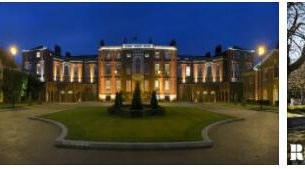The new conquests of Florentine art gradually reached northern Italy. Around the middle of the century, Andrea Mantegna assimilated them and spread them, imprinting on them his own humanistic energy with enthusiasm for archaeological reconstruction, a rigor of linear engraving, for which he dominates. And immediately around him arise the three great Ferraresi, Tura, Cossa and Ercole dei Roberti, who replace Humanism with the linear and psychological torment of the ultramontans. Antonello da Messina arrives in Venice, master of both the regular Tuscan shapes and the refined shades of the Flemish color, all of which are the mark of his personality. Gentile Bellini is a bit like the Ghirlandaio of Venice. Giovanni Bellini, one of the most delicate Christian poets that history remembers, assimilates from his father Iacopo, from Mantegna, from Antonello, and everything blends in an ever more subtle chromatic refinement to prepare for the advent of the Venetian taste of the sixteenth century. Vittore Carpaccio flickers around the stones of his Venice with flights towards an impressionistic future. In Lombardy it is the Foppa, monumental, and the Borgognone, which is a Sienese lost in Lombardy. In Bologna, a northern Perugino: France. Vicenza, Verona, Cremona, Brescia, Bergamo produce personalities since the sixteenth century, which look above all to Venice. Each city creates its own school, in contact with local ideals, and a unique flowering in the history of art expands in Italy.
In the fifteenth century the Gothic traditions in the art of goldsmithing were preserved, but the Renaissance was established by virtue of sculptor goldsmiths, such as Ghiberti in the doors of the “beautiful San Giovanni”, Verrocchio and Antonio del Pollaiolo in the backyard of the Florentine Baptistery, and Iacopo della Quercia and Donatello also contributed to the reliefs of the baptismal font in Siena. He developed the art of niello with the goldsmith Maso Finiguerra in Florence and with the painter Francesco Francia in Bologna.
The Da Baiso, heirs of that Tommaso who carved the choir of San Domenico in Ferrara, were famous in the art of wood: they worked in Modena, Bologna, Venice, and in the studio of Lionello d’Este in Ferrara, where they had as collaborators Lorenzo and Cristoforo da Lendinara, princes of the Renaissance inlay.
Perugian tablet boxes spread, and in stucco the works of Florentine sculptors were printed and spread everywhere.
The fifteenth century also retained the Gothic traditions for a long time in the sprawl, even in the well-known seal of the Parma-born GB Enzoli for the bishop Roverella. Prince of the medal was Pisanello, unsurpassed in the art of all time. With different methods, sculptors of genius were applied to the iconic medal, such as Francesco Laurana and Antonio del Pollaiolo France and Caradosso gave perfection to the coin.
Small bronzes entered the house – ornaments, the work of great masters such as the Tibicino Faun by Antonio del Pollaiolo, and, between shop and workshop, the plaques, small bronze bas-reliefs of various shapes and of various uses, which often represent the flower of the he art of goldsmithing, were used to exchange production essays in noble metal, or even in crystal and precious stones.
Ceramics had the maximum flowering in the factories of Florence, Cafaggiolo, Deruta, Urbino, from which the dishes designed by Timoteo della Vite came last.
According to MYSTERYAROUND, the glyptic also had its development, like all the arts, especially with Giovanni dalle Corniole and Valerio Vicentino; the glassmaking found, with the Beroviero factory, new splendor in Venice, also queen, in the fifteenth century, of the textile arts, with the magnificence of its counter-cut velvets, brocades and damasks. Embroidery gained glory from drawings by great masters (Florence, Opera del Duomo: Antonio del Pollaiolo; Milan, Poldi Pezzoli Museum: Sandro Botticelli; Orvieto, Museum: Luca Signorelli). The Modenese masters were celebrated in the art of leather: Giovanni Buonomi and his sons Bartolomeo and Francesco.
In the first decades of the second half of the 15th century, the miniature found its last splendor with Guglielmo Giraldi, of cosmesque strength, in Ferrara, while Francesco Antonio del Chierico with others minified Federico da Montefeltro’s Bible in the Vatican Library and Petrarch’s Triumphs in that of Madrid.
The woodcut and copper engraving stopped the hand of the miniatures, and the tarot cards called by Mantegna, but by a master from Ferrara, the illustrations for the Divine Comedy by Sandro Botticelli, the series of the Prophets, the Sibyls, the Seven Planets, the prints ” Otto ”, those of Andrea Mantegna, from the beginning gave specimens of rare beauty.




